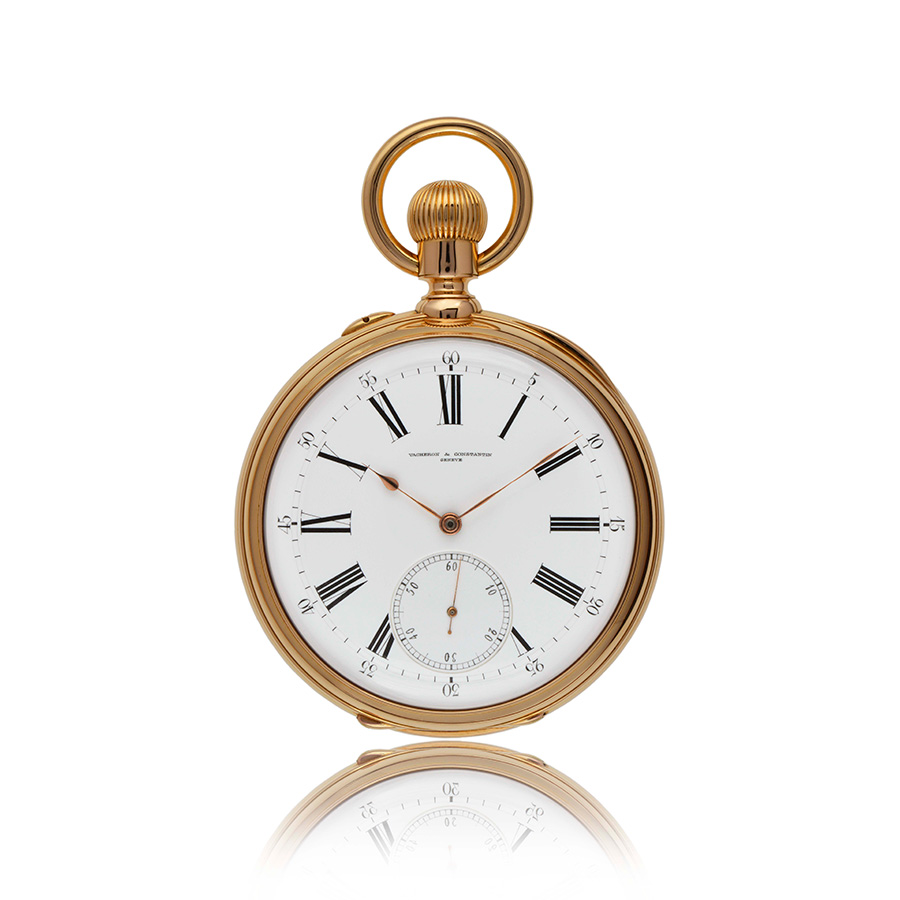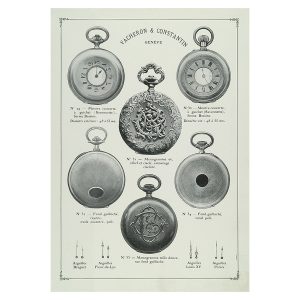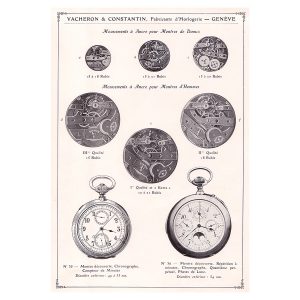
Ref.10155
Manufacturing Year 1884
Double-sided pocket watch, in 18K yellow gold, front enamel dial with 11 Roman numerals and external timer in Arabic numerals (5 to 60) and small seconds at 6 o’clock, back enamel dial with 48-month perpetual calendar and moon phases. Geneva Observatory Prize.

